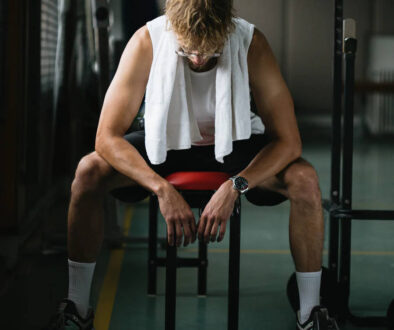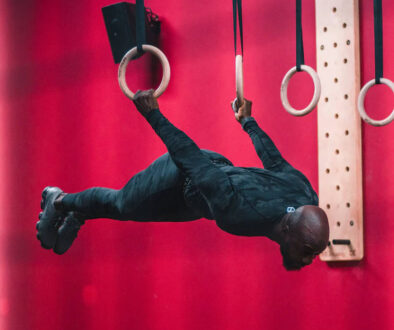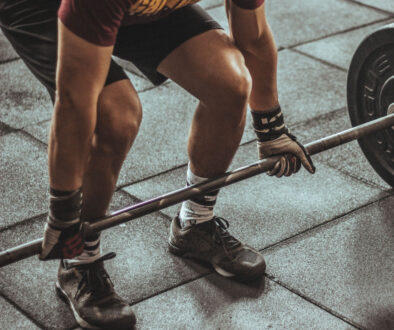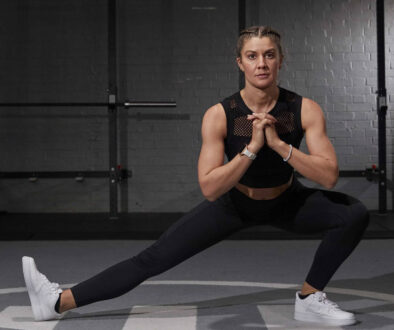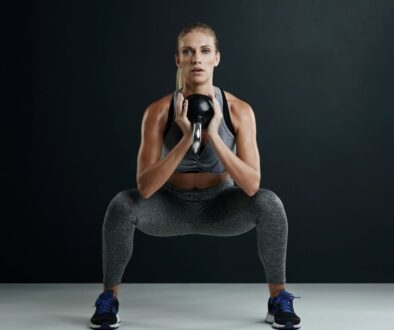The Importance of Warming Up and Cooling Down When You Train
We have all been there before. We’re getting ready to work out, and rather than warm up, we choose to jump right into our workout. While this may save about 5-10 minutes, choosing to skip a proper warm up increases the potential to have lasting negative impacts on your fitness goals.
When done correctly, warming up and cooling down provides several benefits by increasing your body’s capacity to perform and significantly reduces your likelihood of injury.

Why You Need to Warm Up
A proper warm up gives your body the time it needs to slowly prepare your muscles for increased activity. The key takeaway here is that your body has literally warmed up in temperature when you complete your warm up.
A warm up will slowly increase your body temperature as you engage your cardiovascular system and increase blood flow throughout your body. This gradual escalation in effort prepares your muscles for activity and may help alleviate muscle soreness and reduce chances of injury.
How to Warm Up
One of the biggest mistakes that we see beginners make when attempting to warm up for a new fitness program is to stretch over a dynamic warm up. Stretching before you exercise can be counterintuitive to your warm up.
The issue with stretching first is that rather than slowly elevating your body temperature and preparing your muscles for activity, the act of stretching forces your muscles to tighten. This can often lead to over-stretching and may increase your chances of injury. A warm up is very different from a stretch and should mimic whatever your activity for your workout is, but at a lower intensity!
Here are two examples of some warm up activities:
- To warm up for a run, go for a brisk walk for about 5-10 minutes.
- To begin weightlifting activities, conduct range of motion exercises and foam roll the muscle groups you will train before beginning your activity. You can also conduct the exercise at a much lower weight before executing your actual sets. Redefining Strength has a great video that you can follow along to get started and make sure you are ready to go for your next workout!

Why You Need to Cool Down
We don’t just have to prepare our bodies for activity, we also have to prepare our bodies to recover. Some of the most significant benefits include:
1. Slowing Down our Heart Rate
By reducing our heart rate back to normal, we reduce the stress that we put on our Cardiovascular System. Cooling down allows for us to normalize our heartbeat while preparing our muscles to contract and begin recovering for our next training session.
2. Helps reduce Delayed Onset Muscle Soreness (DOMS)
DOMS usually occurs between 24 to 48 hours after exercise due to the stress that we put on our muscles while we train. Some soreness is expected regardless of whether we cool down or not; skipping a proper cool down will result in significantly more discomfort. Sometimes the soreness can be so bad that it may hinder your overall day-to-day life. A good cool down allows us to restrict our muscles and increase blood flow to begin flushing excess lactic acid and jump-start our recovery.
3. Injury Prevention
A proper cool down is a great place to include your stretching as a form of injury prevention. After exercising, our muscles are very pliable, kind of like Play-Doh. When muscles are this pliable, stretching consistently allows the muscles to lengthen over time and increase our range of motion, which helps reduce chances of injury that are often correlated with inflexibility.
How to Cool Down
Your cool down will often depend on the type of training you did for your workout. Cool downs also do not have to be very long, but we like to recommend anywhere between 8-10 minutes at a minimum.
A majority of cool downs will include slow movements and stretching. Still, we also want to suggest that you include some yoga or breathing exercises to help regulate your heart rate back to a steady pace to reduce the chances of you feeling dizzy or lightheaded.
Here are two examples of some cool down activities:
- To cool down from a run, you can slow down to a jog for 5 minutes, and then slow down further to a brisk walk and taper to a slow walk over another 5 minutes. After your 10 minutes of jogging into a walk, you can then conduct some light stretching.
- Following a weight training session, you can conduct whole-body stretches and then follow it up with about 5 minutes of breathing exercises. If you would like to check out some ideas on stretching routines, check out these 8 Relaxing Total Body Stretches on verywellfit.com.
What to expect if you skip your Warm Up and Cool Down
Here is what you can expect if you do not warm up or cool down after your training.
Increased Risk of Injury
A proper warm up and cool down help reduce the chance of suffering a skeletal muscle injury like shin splints. If you have never suffered them before, Shin splints can be almost debilitating in some cases and can drastically impact your workout routine. If you would like to learn more about shin splints or currently have them and would like to see how to treat them, Canyon Oaks Foot & Ankle has a great article on what shin splints are and how to prevent them. Incorporating an extra 20 minutes into your workout significantly increases your chances of avoiding painful injuries like this.
Blood Pooling
Another risk to skipping a warm up and cool down is what’s called blood pooling. Blood pooling is when your muscles suddenly stop contracting. This sudden stop may make your blood pool in the lower extremities of your body, reducing the pressure your blood has to make its way back to your heart and brain. Blood Pooling may result in you feeling dizzy or lightheaded, and in some cases, you may even faint.

Listen to Your Body!
It is very easy to get caught up and tell ourselves that we don’t have the time to warm up or cool down. Sometimes even getting in a workout, in general, can be a challenge, but we can all most likely find some time to work them in with a bit of flexibility. If we don’t, we run the risk of injury and not working out moving forward. The next time you find yourself debating whether or not you should jump right into your workout, remember the lasting impact it may have on your body!



